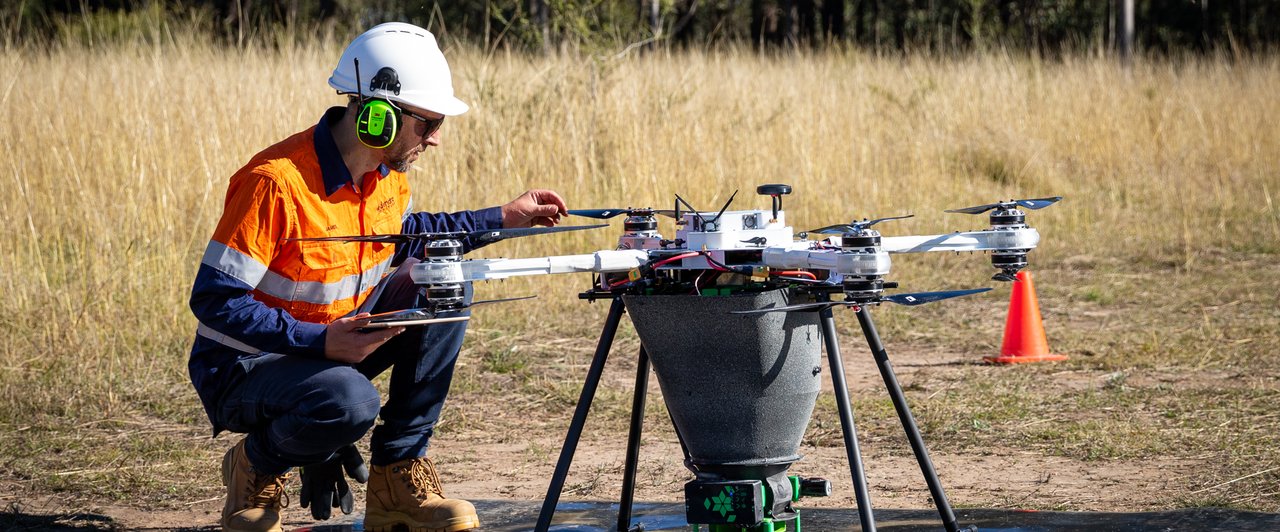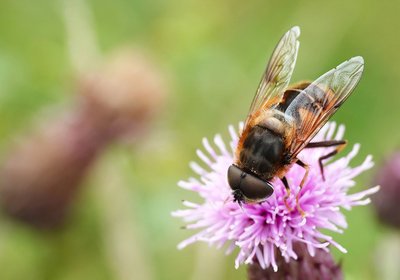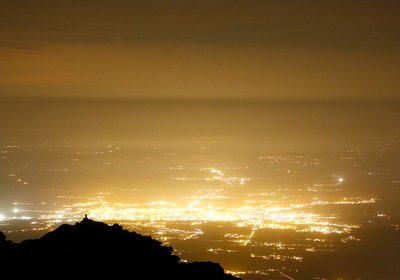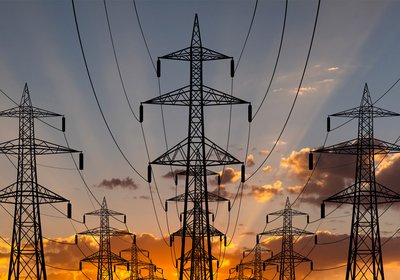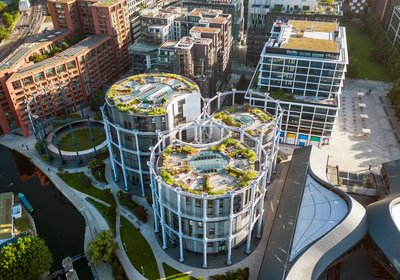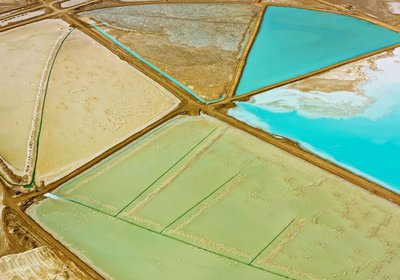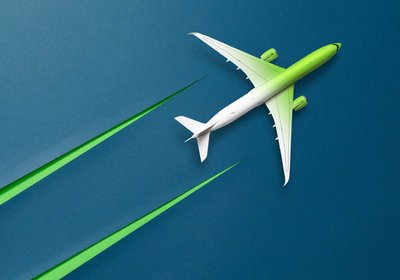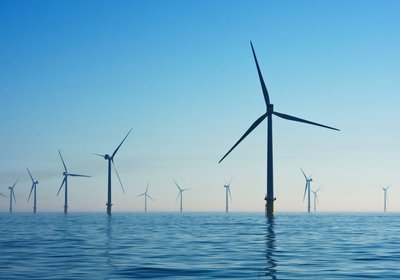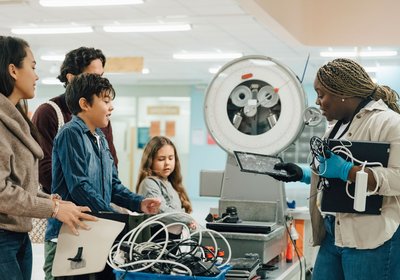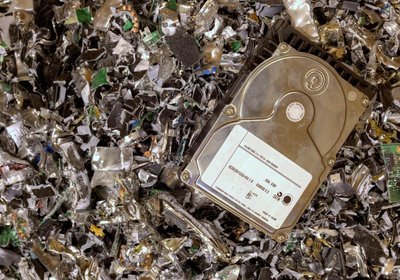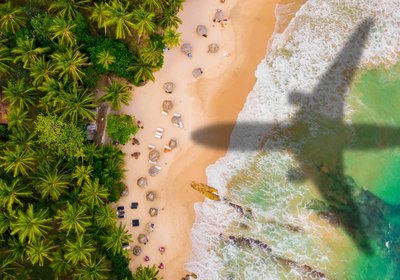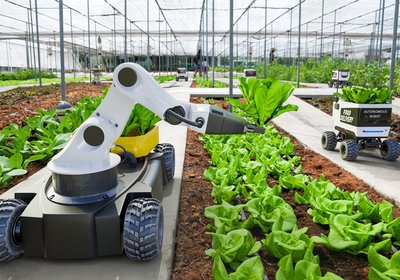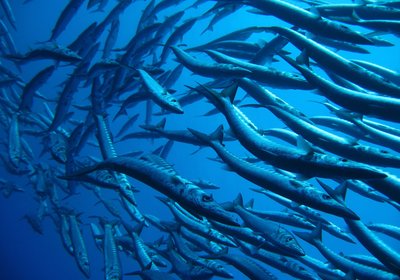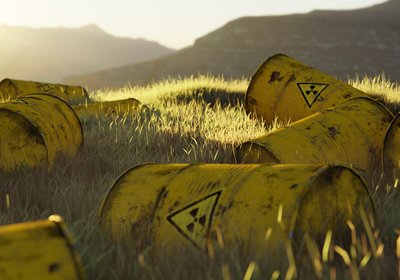Reforesting the planet using seed-spitting drones from the air
On a barren hillside in the immensity of Australia’s outback, two large drones sit on the ground, each of their propellers gathering speed as the machines gently lift off and start to rise upwards into a clear-blue sky.
The remote and difficult-to-access setting would make for a perfect getaway for any drone enthusiast. But the two people operating these large white unmanned aerial vehicles work for Dendra Systems, and they have a startlingly ambitious goal: to reforest the surrounding areas and nurse them back to environmental health.
Founded in the UK in 2014, Dendra Systems uses a combination of ecological expertise, artificial intelligence and technological hardware to reforest areas around the world that have been damaged by mining, intensive agriculture, fires or other disruptive forces.
Using a proprietary system for analysing topography and habitats, its drones plant seeds by air dramatically speeding up traditional planting methods and making it easier to access remote or hard-to-get-to places.
Long term, says Susan Graham, the company’s chief executive officer, Dendra’s ambition is to reforest diverse geographies at a scale sufficient to help solve one of humanity’s biggest challenges: to halt global warming by restoring the planet’s natural habitats.
“We can supercharge interventions and restore ecosystems ranging from a single industrial site to entire forests and more,” she explains. “Aerial seeding from drones gives you that super power.”
Deforestation is one of the world’s biggest causes of environmental degradation. Because trees absorb carbon dioxide from the atmosphere, the loss of forests and woodland areas is also a dangerous contributor to the build-up of greenhouse gases, which cause global warming.
Wildfires have increased in intensity in recent years. Last year alone, the US state of California recorded its biggest modern-era loss of forest, with 4.2m acres burned. In the 2019-2020 bushfires, Australia lost an estimated 46m acres. In one study on the immediate environmental impact, the World Wildlife Fund (WWF) calculated that more than 3bn vertebrates were affected – with some endangered species driven to extinction.
The WWF points out that forests around the world are also under threat from agriculture and, in particular, from illegal logging. In 2019 alone, the tropics lost almost 30 soccer fields’ worth of trees every minute due to logging and clearing the land for cattle and other agriculture.
Companies and societies have to distance themselves from a Wasteful, Idle, Lopsided and Dirty (WILD) economy, which lies behind the deforestation of recent years. The subsequent transition to a circular, lean, inclusive, clean (CLIC™) economy will inevitably produce winners and losers in the corporate landscape. But those contributing towards a circular economy through helping to restore the natural environment will be more likely to emerge as the leaders of tomorrow’s new economy.
Dendra Systems, which was founded with the express aim of reforesting the planet, and has already completed more than 40 projects in 11 countries, looks to be on the right path.
The company, which has 50 employees and has so far raised just over $10m in series A funding, begins its reforesting process with a detailed aerial study of the terrain under scrutiny. The cameras mounted on its drones can pinpoint a single blade of grass, and the drones can remain airborne for up to two hours at a time, covering hundreds of hectares in a single day.
The data is then analysed by Dendra’s team of ecologists, who tag and detect plant species and other important data captured in the images in order to develop insights to create an accurate ecosystem understanding. Dendra is also developing visual-recognition artificial intelligence that can carry out many of these identification tasks, making the process even more agile.
“By applying ecologically-trained AI to that data, we can understand how each aspect of the ecosystem is trending and identify early risks like erosion and invasive species before they derail restoration work,” says Graham. “We turn data about the land into insight about the ecosystem.”
The data captured by the cameras also feed machine-learning algorithms that use the information to design the most efficient flightpaths for seeding the ground with different varieties of trees and other vegetation carefully selected to match the habitat.
Once their routes have been determined, Dendra’s drones zig-zag just a few metres above a given area dropping seeds with unerring precision and at a rate of about one every second thanks to a specially designed dispenser that hangs under the drone and that can carry hundreds of seeds at a time.
Aerial seeding can plant over terrain without human contact or the use of heavy machinery, which risks compressing and aggravating the soil. It can also save time and money by reforesting areas roughly 75 times faster than ground-based methods.
Ideas come in many forms, but the best ones often start out small and grow over time. In Dendra Systems’ case, its contribution to the CLIC™ economy is borne out with every seed that it plants.
